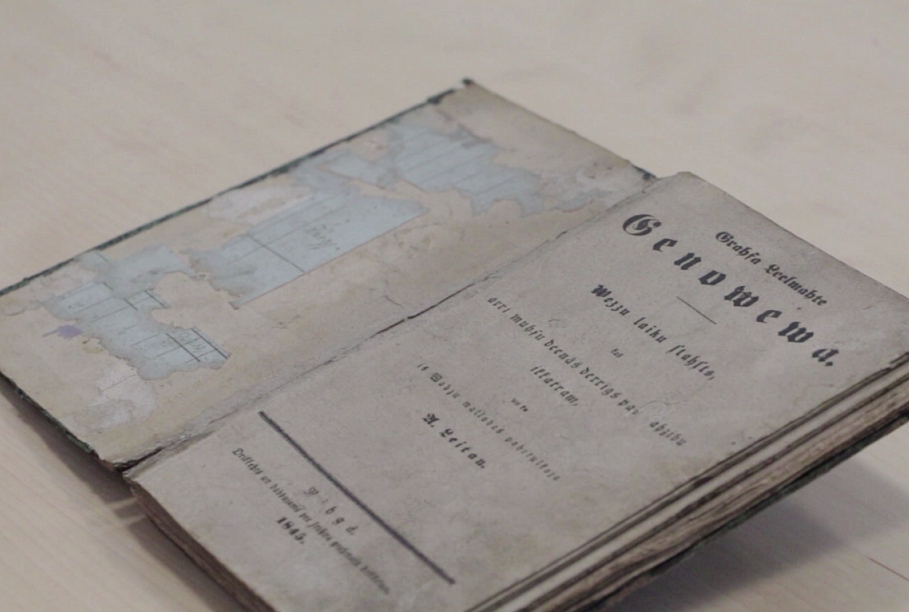The story about this book is part of a Latvian Radio strand featuring six books that shaped Latvian letters across six centuries.
The year 1845 saw the Latvian-language publication of 'Genoveva of Brabant: A tale of old time', at the time an unusual book for Latvian letters which hitherto mostly focused on religious and practical books. It was a translation of Christoph von Schmid's book by journalist Ansis Leitāns. Until its publication, people were used to books having practical or educational value.
That's why it's never told explicitly that the book is entertaining.
However Leitāns did admit in the foreword that this is a new sort of text with emotional overtones. "It will produce a tear or two from the reader," he wrote.
The story is based on a medieval legend. Knight Siegfried is going to war and leaves his newlywed wife, the beautiful countess Genoveva in the care of his castle's groundskeeper Golo. Golo falls in lust with Genoveva, but the virtuous woman refuses his advances. Angered, Golo sends Siegfried a message accusing Genoveva of infidelity, and the knight orders to kill her and their newborn child.
The executioner however spares her life, and Genoveva goes into hiding. She spends seven years in the woods with her child, in a cave of a doe (female deer) with the child subsisting from the doe's milk and Genoveva picking berries and edible roots. While hunting, Siegfried stumbles on Genoveva. The misunderstanding is resolved and they both return to the castle to live happily ever after.
For many people, the story of Genoveva opened the door to the wonderful world of literature and encouraged sales of fiction in the following years.
People bought the book and lent it to their friends. It went from home to home. Adept readers read the book for others by candlelight. Some cried tears of compassion for the ill fate of the heroine, while others were angered by the mischief of Golo.
Its popularity is attested to by the fact it was reissued just three years later, and several dozen new publications and translations followed in the 80s and 90s. They were illustrated in black and white as well as in color. The story became less interesting by the early 20th century when the naive text didn't suit the readers' refined tastes.
The book will be on show at the National Library of Latvia exhibition "Book in Latvia", which will be opened August 29.



























